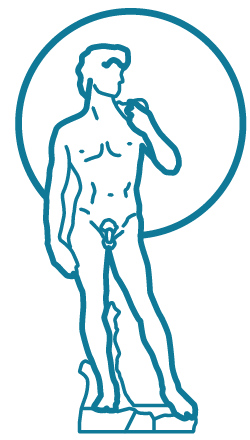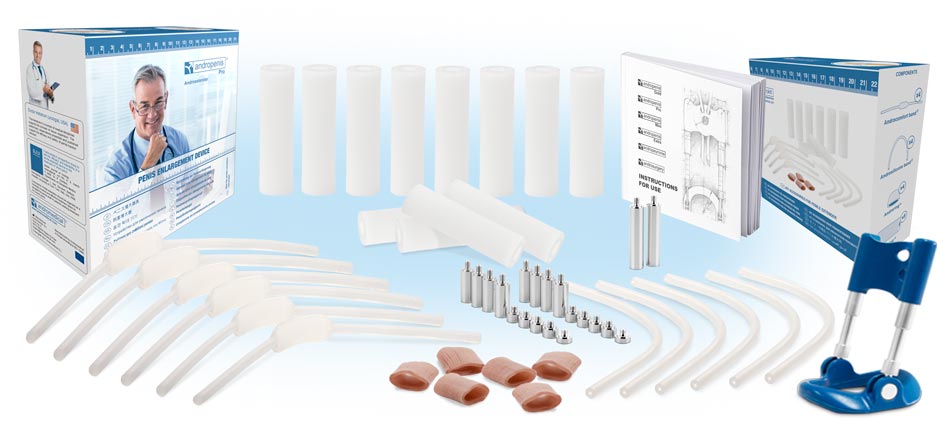Fernando Molina-Campuzano, clinical psychologist, Spain.
When a patient decides to obtain information regarding penis enlargement extender, many psychological aspects have to be taken into consideration: reasons for their request, motivating factors, and expectations are of extreme importance for the management of each case.

Patient classification based on a psychological study
1. Psychological aspects:
In each treatment, psychological factors play an important role during the consultation, treatment development and evaluation, and post treatment evaluation.
2. The psysician:
The expectations of the patient seeking information on penile enlargement should be determined. The patient is expecting to find a doctor who can explain the process in full detail in a professional and confidential fashion.
3. The patient:
By listening to the patient carefully, the physician can appreciate his goals and expectations. One should not generalize with different patients, since there are different reasons and personality traits involved in the patient’s objectives for using the Andropenis®. One would want to carefully evaluate those personality traits that involve insecurity, role improvement, and relationship improvement. As long as we identify the patient’s objectives and remind him of his goals, the physician will help maintain the patient’s interest, achieving more effective compliance during the treatment period.
4. Patient classification according to motivating factors:
Type I:
Primary Objectives: Size. Secondary Objectives: To reinforce self-confidence in sexual relationships, to achieve increased desirability, to avoid rejection and solitude, to be part of the winners circle, and to improve pleasure given to their sexual partner. A prototype patient is a 40 years old individual who, for the first time in his life, is confronted with erectile dysfunction. He perceives a decreased length of his penis or diminished virility. In this case, by explaining that tissue growth and neo-vascularisation caused by the treatment improves not only the quality of erections but also the length of the penis and a sense of virility, the patient’s objective(s) will be achieved.
Important emotional changes, which affect the patient, are readily observable. Sometimes, however, there may be a change in the partner’s attitude, which may present an entirely new set of issues for the patient. Attempts to help the patient identify these can be helpful, especially if rejection is an issue. This patient is likely to avoid intimacy, and has an absence of emotional or sexual relationships. They may constantly seek superficial interactions, in some degree, to compensate for personal frustrations, which may have originated in their youth (L. Festiger 1975). We need to transmit confidence to the patient, with the reassurance that his penis will grow and that the quality of his erection will also improve. When they perceive a penis of a larger dimension, the patient’s self esteem should also improve. The patient will think of himself as a better lover and feel more proud of his sexual attributes. As a response to the phallic myth, he will likely see an increased sexual desire in his partner, which can enhance foreplay and improve positive expectations from intercourse. The patient will receive all this information as a feedback. Increased confidence and self esteem will make his sexual approach calm and relaxed, thus automatically helping to activate the parasympatic nervous system-a key factor in erection.
Type II:
Primary Objective: Obtain a penis of normal or average dimensions. Secondary Objective: Eliminate insecurity, complexes, solitude and rejection.
We are talking about a patient with a smaller than average penis, or a small penis that creates an inferiority complex in the patient. Some of these individuals avoid situations in which their nudity will be exposed (dressing rooms, beaches, sexual encounters, etc.). They present obsessive thoughts on their nudity, which are focused on the size of their penis. Such individuals, during their consultation, express feelings of being observed and perhaps of being made fun of due to the small size of their penis. This individual wants to make sure that the growth will be both in erection (to satisfy their own needs as well as those of their partners) and in flaccidity (since they feel observed and criticized by others).
At the beginning, these patients may not seem to expect results from the treatment, but due to their high personal motivation, and after being provided with the proper scientific information, they usually decide to begin the treatment. They have the highest treatment compliance index and tend to use the device for more than 10 hours a day. Even though they are very enthusiastic with the treatment, if they do not see results on a short term (1-2 months), they question the treatment’s efficacy. In such instances, it is recommended to instruct the patient that the first month is an adaptation period, and to continue the treatment 11 hrs a day for the first month and a half to accelerate growth. Important emotional changes, which affect the patient, are readily observable. Sometimes, however, there may be a change in the partner’s attitude, which may present an entirely new set of issues for the patient. Attempts to help the patient identify these can be helpful, especially if rejection is an issue.
During treatment, these individuals require a parental-like guidance and a continuous support from the physician.
Type III:
Primary Objective: Obtain a penis of large dimensions.
Secondary Objective: They usually possess narcissistic traits with the goals being to elicit sexual desire from their partners and admiration by others. They believe that with a larger penis, they will belong to the elite group of winners. Some of the patients encounter difficulties in establishing significant personal relationships and base their communication on sexual assets, which make them feel comfortable and more secure. We are talking about in 4 categories:
- A – Males in a stable relationship: those who want to obtain a larger penis to improve their relationship and to introduce new forms of play that will gratify both individuals. They seek a change in their routine. They tend to have financial means to seek treatment.
- B – Males without a stable relationship: those who have multiple sexual partners. They find gratification in such relationships. They are very proud of their physique, of their appearance, and of their large penis (“Teoría Psicoanalítica de las neurosis”, Fenichel, 0-1987).
- C – Sportsman: those who invest a lot of time and money in their physique and traits and who are narcissistic. They frequent places where they can exhibit themselves (nudist beaches, swimming pools, dressing rooms, etc…) since they feel very comfortable and know how to elicit admiration by others.
- D – Homosexuals: these men often place a lot of importance on their penis size. There is generally less of a need to be convinced about the efficacy of the treatment, but when these patients obtain 1 or 2 cm of growth, they often abandon the program prematurely. Compliance is encouraged.
Tags: penis, penis enlargement, penis extender, penis enlarger, enlarge penis, increase penis size, penis lengthening, andropenis, penis health, men´s health, men´s sexual health, sexual health, sex life, men

$99 / €99 / 89£ / 149 AU$-CA$. Free Shipping
SAVE $ 50 / € 50 in Kits
